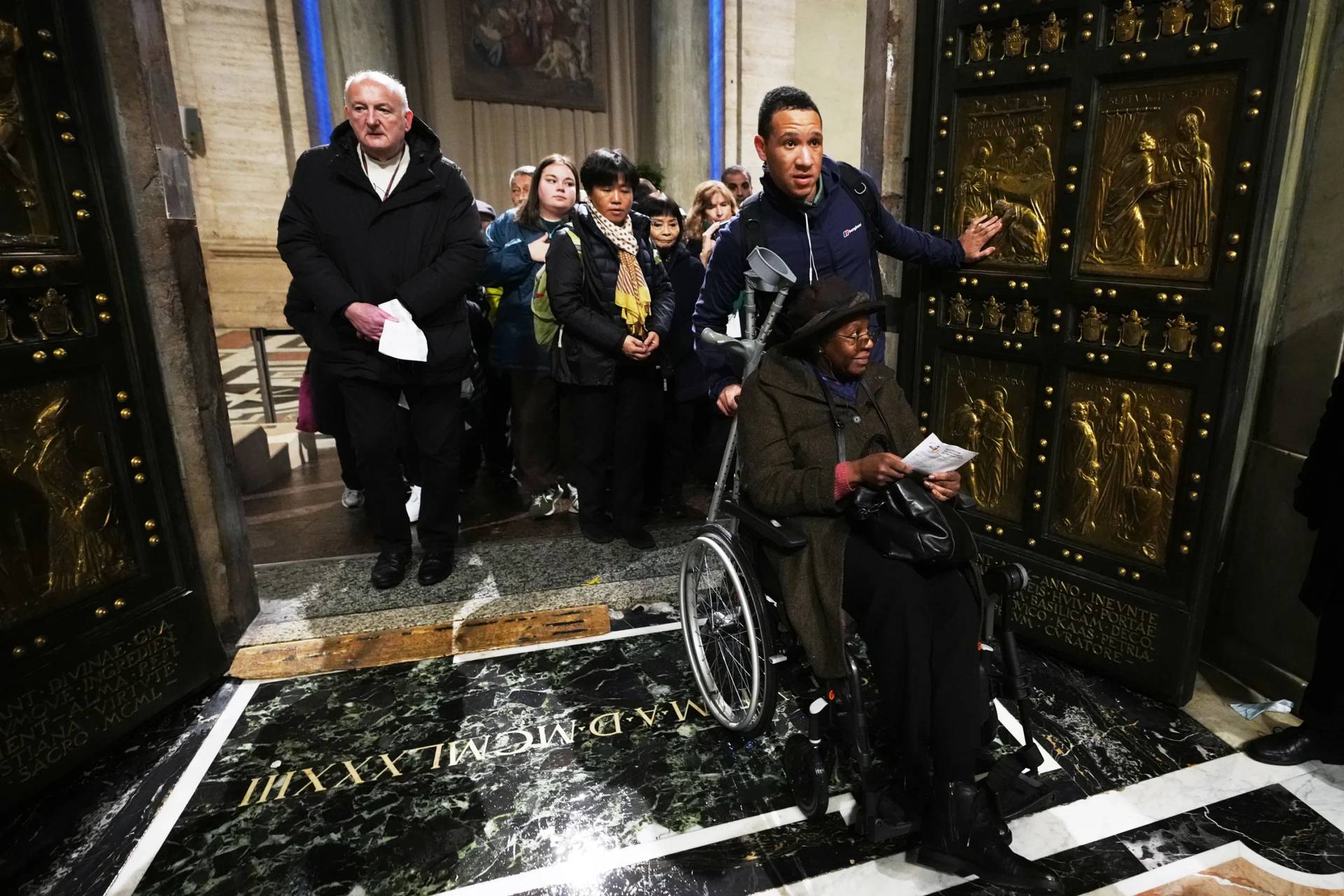The head of the Vatican’s communications department is defending his office’s use of an accused sexual abuser’s art on its website.
The Prefect of the Dicastery for Communication of the Holy See, Italian layman Paolo Ruffini, offered his defense on Friday, June 21st, in response to questions from journalists attending his keynote address at the annual Catholic Media Conference in Atlanta, Georgia.
“We did not put any new photos,” Ruffini said, “we just left what [images] there were.”
“I think this is the reason,” Ruffini said. “We didn’t decide what—what wasn’t in our charge to decide.”
The artist in question is ex-Jesuit Father Marko Rupnik, who has been accused of abusing scores of victims—most of them women religious—over several decades, much of which he spent in Rome at the Centro Aletti art institute he founded in the early 1990s.
“We’re not talking about abuse of minors,” Ruffini told a room of roughly 150 journalists and other media professionals. “We are talking [about] a story that we don’t know,” Ruffini said. “Who am I to judge the Rupnik stories?”
Jesuit investigators have said they found allegations that Rupnik spiritually, psychologically, and sexually abused his victims to be “highly credible” and the order expelled Rupnik last year after he refused to abide by restrictions his superiors placed on him.
The Vatican is currently investigating Rupnki after Pope Francis last October waived the usual statute of limitations in church law for prosecuting offenses against adults.
Rupnik’s alleged victims, along with other survivors of clerical sexual abuse and victim-advocates, have repeatedly called for the Vatican to stop using digital reproductions of Rupnik’s works and have criticized the Vatican both for the persistent use of Rupnik images and for the Vatican’s silence in the face of those requests.
Pope Francis himself has referred approvingly to Rupnik’s art on at least one specific occasion since the story broke in late 2022, and new Rupnik installations have continued to go up around the world.
After acknowledging the criminal process currently underway against Rupnik, Ruffini said, “We think—the dicastery—and I personally think that it,” i.e. removing the images from official Vatican media, “is not a good way to anticipate.”
“You know,” Ruffini is heard saying in an audio recording of Ruffini’s speech and Q&A obtained by Crux, “as Christians, we are asked not to judge.”
Rupnik’s victims tried for years to get action from Rupnik’s erstwhile Jesuit superiors, who reportedly first heard their complaints in the 1990s.
In 2019, Bishop Daniele Libanori, a Jesuit priest and auxiliary bishop in Rome who was investigating a religious congregation Rupnik had helped found in his native Slovenia, finally brought some of the many abuse allegations to competent Roman authorities.
The then-Congregation for the Doctrine of the Faith decided the statute of limitations had expired and declined to prosecute Rupnik. The Jesuits expelled Rupnik, who nevertheless remained a priest in good standing and shortly after his expulsion was incardinated in the Slovenian diocese of Koper, generating global outrage.
Details of the case against Rupnik and its handling emerged piecemeal over the course of many months, one of which regarded a secret Vatican trial of Rupnik on charges he illicitly absolved an “accomplice” in a sin against the sixth commandment—technical legal jargon for a sexual partner—which is a serious crime at Church law, and was briefly excommunicated but faced no other penalty.
Under sustained media pressure and prodding from his own circle, Pope Francis reversed course—having previously stated his general reluctance to lift statute bars in cases involving adult victims—and decided to waive the statute of limitations, ordering a review of the whole Rupnik matter.
In Atlanta on Friday, Ruffini said those calling for the Vatican to cease using digital reproductions of works produced by Rupnik are “wrong” to do so. “Removing, deleting, destroying art,” Ruffini said, “has not ever been a good choice.”
Victims of Rupnik have told in gruesome detail of how Rupnik would use his “creative” process as a tool of manipulation and an occasion for his abuse.
One of Rupnik’s most outspoken victim-accusers, Gloria Branciani, told OSV News, “In Rupnik, the sexual dimension cannot be separated from the creative experience.” “In portraying me,” Branciani said, “[Rupnik] explained that I represented the eternal feminine: His artistic inspiration stems precisely from his approach to sexuality.”
“I don’t think we have to throw stones,” Ruffini said in Atlanta on Friday, “thinking that this is the way of healing someone.”
“Do you think that if I put away a photo of an artwork from my—from our—website, I will be more close to the victims? Do you think so?” Ruffini repeatedly asked a journalist who had put a follow-up question to him regarding his message to victims.
“I think you’re wrong,” Ruffini said, “I think you’re wrong,” Ruffini repeated.
“I really think you’re wrong, Ruffini said again.















